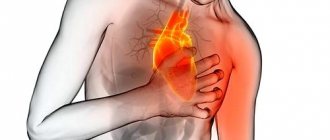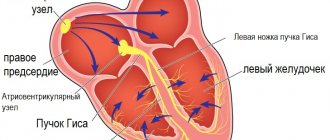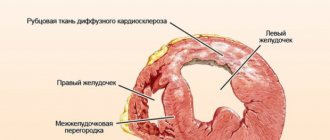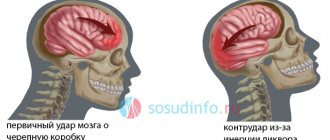Truncus arteriosus (TCA) refers to complex congenital malformations of the heart and blood vessels, in which only a single common blood vessel, not divided into the pulmonary artery and aorta, departs from the heart, carrying blood throughout the pulmonary and systemic circulation, and leading to deep hemodynamic disorders. This abnormal vessel for an already born child during intrauterine development is called the common arterial trunk.
Such a complex heart and vascular defect occurs in 2-3% of patients with congenital defects, and it is always combined with an anomaly such as a ventricular septal defect. OSA is often combined with other malformations of the blood vessels and heart: patent atrioventricular canal, abnormal drainage of the pulmonary veins, coarctation of the aorta, one ventricle, mitral valve atresia, etc. In addition, such anomalies may also be accompanied by noncardiac malformations of the skeleton, genitourinary or digestive system.
Clinical manifestations of OSA are expressed in two syndromes: congestive heart failure and arterial hypoxemia. With this malformation of the heart, symptoms of profound hemodynamic disturbances begin to appear immediately after birth, and if there is no narrowing of the mouth of the pulmonary artery, then the condition of the newborn is assessed as critical from the first minutes of his life. About 75% of children with OSA die before the first year of life, and 65% of them die before 6 months. A fatal outcome with the common truncus arteriosus is caused by overcrowding of the pulmonary vessels with blood and severe heart failure.
Treatment for OSA can only be surgical and should be carried out in the first months of the child’s life. Often, for patients who are 2-3 years old, it is already too late to operate and they, as a rule, can only live up to 10-15 years. In the absence of timely cardiac surgery, less than 10% of patients survive to 20-30 years.
In this article we will introduce you to the presumed causes, types, symptoms, mechanisms of hemodynamic disorders, methods of identifying and treating the common arterial trunk. This information will help you understand the essence of the disease, and you can ask your doctor any questions you have.
Causes
Bad habits of the expectant mother significantly increase the risk of developing heart defects in the fetus.
Like all congenital heart defects, the occurrence of OSA can be provoked by negative factors affecting the body of the pregnant woman and the fetus. Their effects are especially dangerous during the 3-9th week of gestation, since it is during this period that ebryonogenesis of the heart of the unborn child occurs.
Such unfavorable factors include:
- genetic disorders;
- infectious agents (Coxsackie B viruses, herpes, rubella, influenza, enterovirus, etc.);
- bad habits of the expectant mother (smoking, taking drugs and alcohol);
- unfavorable ecology (electromagnetic radiation, radiation, toxic emissions, etc.);
- occupational hazards;
- taking certain medications;
- diseases of the pregnant woman (especially diabetes mellitus, autoimmune reactions).
Features of the cardiovascular system in children. Generalization
Relatively large heart mass , relatively wider heart openings and vascular lumens are factors that facilitate blood circulation in children. Young children are characterized by low systolic blood volume and high heart rate, and the minute volume of blood per unit of body weight is relatively large. The relatively larger amount of blood and the characteristics of energy metabolism in children force the heart to perform work that is relatively greater than the work of the heart of an adult. The reserve capacity of the heart at an early age is limited due to greater rigidity of the heart muscle, short diastole, and high heart rate. The “advantage” of a child’s heart is the absence of negative effects on the heart muscle from chronic and acute infections and various intoxications.
Varieties
Depending on the location of the OSA relative to the ventricles of the heart, there are three options:
- mainly over the right ventricle – in almost 42% of patients;
- equally over both the right and left ventricles - in almost 42% of patients;
- mainly over the left ventricle - in approximately 16% of patients.
Depending on the origin of the pulmonary arteries, cardiologists distinguish four main types of OSA:
- I - the trunk of the pulmonary artery branches off from the single arterial trunk and is divided into the left and right pulmonary artery;
- II – both pulmonary arteries branch from the surface of the posterior wall of a single arterial trunk;
- III – both pulmonary arteries branch from the surface of the lateral walls of a single arterial trunk;
- IV – there are no pulmonary arteries, and blood is delivered to the lungs by bronchial arteries branching from the aorta.
Type IV OSA is now considered by cardiologists as one of the severe forms of tetralogy of Fallot.
Hemodynamic disorders
OSA develops in the fetus at 5-6 weeks of pregnancy. Under the influence of unfavorable factors at this stage, the division of a single trunk into the main vessels - the pulmonary artery and the aorta - does not occur. There is no normal partition between them, and they continue to communicate with each other.
The common trunk delivers blood to both ventricles of the heart, and this process leads to mixing of venous blood with arterial blood. In this case, the pressure remains the same in the truncus arteriosus, cardiac chambers and pulmonary arteries.
In OSA, there is always a defect in the septum between the ventricles. In addition, if the development of other partitions of the heart chambers is delayed, the heart may have only 2 or 3 sections. The valve located in the truncus arteriosus may have 1, 2, 3 or 4 leaflets.
Equal pressure in the heart chambers, pulmonary artery and aorta causes overfilling of the vessels in the lungs and a rapid increase in heart failure, which at a certain point provokes death. In surviving children, such profound hemodynamic disturbances cause the development of severe pulmonary hypertension.
In the presence of narrowing of the pulmonary artery, overload of the pulmonary vessels does not occur, but a pressure gradient is created in the “aorta - trunk of the pulmonary artery” variant. This change in hemodynamics leads to the development of right and left ventricular failure.
Depending on the form of OSA, hemodynamic disturbances can occur in three ways:
- normal or slightly increased blood flow in the lungs with a mildly expressed blood discharge - manifested by the occurrence of cyanosis during exercise and is not accompanied by heart failure;
- decreased pulmonary blood flow due to stenosis of the pulmonary artery orifice - manifested by constant cyanosis due to impaired oxygen enrichment of the blood;
- increased pulmonary blood flow and increased pressure in the pulmonary vessels - expressed in pulmonary hypertension and cardiac failure, which are not corrected by the therapy.
Pulse in children, pulse rate in a child
The pulse in children of all ages is more frequent than in adults. This is explained by faster contractility of the heart muscle due to less influence of the vagus nerve and more intense metabolism. The increased blood needs of the tissues of a growing organism are met by a relative increase in the cardiac output. The heart rate in children gradually decreases with age. Screaming, anxiety, and increased body temperature always cause an increase in heart rate in children.
Symptoms
Clinical symptoms of this congenital heart and vascular defect are expressed in arterial hypoxemia, manifested by cyanosis, and heart failure. The severity of these phenomena depends on the type of OSA.
With such a congenital heart defect, the following symptoms may be present:
- shortness of breath that occurs at rest;
- excessive sweating;
- decreased endurance;
- cyanosis (minimal to significant);
- rapid pulse;
- enlarged liver and spleen;
- retardation in physical development;
- “heart hump” (not always present);
- deformation of fingers in the form of “drum sticks” and nails in the form of “watch glasses”.
In type I OSA, cyanosis is expressed in a mild form, and in types II-III it manifests itself to a greater extent, but signs of heart failure are not always detected.
When examining a patient, a doctor may detect the following symptoms of OSA:
- increase in pulse pressure;
- increased heart rate;
- single and loud II tone and ejection click;
- holosystolic murmur on the left edge of the sternum with an intensity of 2-4/6;
- decreasing diastolic murmur in the third intercostal space to the left of the sternum (with valvular insufficiency of the arterial trunk);
- murmur heard at the apex on the mitral valve in mid-diastole (not always).
Blood pressure in children
Blood pressure in children is lower, the younger the child. In a newborn baby, systolic pressure averages about 70 mmHg. Art., by the year it increases to 90 mm Hg. Art. The increase in pressure subsequently occurs more intensely in the first 2-3 years of life and during puberty. The increase in pressure with age parallels the increase in the speed of propagation of the pulse wave through muscular vessels and is associated with an increase in their tone. With age, specific peripheral resistance increases due to an increase in the length of resistive vessels and capillary tortuosity, a decrease in the extensibility of the walls of resistive vessels, and increased tone of vascular smooth muscles. Consultations with a pediatric cardiologist - Markushka Polyclinic.
Diagnostics
Suspicion of this pathology will arise during pregnancy, or rather, at a later stage when a woman undergoes an ultrasound.
Suspicion of the presence of OSA in the fetus may arise during an ultrasound at 24-25 weeks of pregnancy. Often, women who discover such a pathology in their unborn child are advised to terminate the pregnancy, since even timely operations to correct OSA are not always successful. In addition to this developmental anomaly, approximately half of the fetuses have extracardiac defects (anomalies of the bone skeleton, digestive or genitourinary system, DiGeorge syndrome).
Identifying the above-described symptoms and physical examination of the child helps to suspect the presence of OSA in a newborn. To clarify the diagnosis, the following examination methods are prescribed:
- X-ray of the chest - the spherical shape of the heart is determined, enlarged shadows of the branches of the pulmonary artery and great vessels, hypertrophy and an increase in the volume of the ventricles;
- ECG - deviation of the EOS to the right and overload of the ventricles of the heart are detected;
- phonocardiography - deviations in tones and heart murmurs are determined (loud II tone, systolic, and sometimes diastolic, murmur);
- Echo-CG – the connection of the pulmonary arteries with OSA is revealed;
- cardiac catheterization - with such a congenital defect, the catheter easily penetrates the OSA, the same pressure is determined in the ventricles, aorta and pulmonary artery, and when the pulmonary artery is narrowed, a pressure gradient is present;
- angiocardiography - radiography with contrast reveals specific anomalies of vascular development, an increase in the volume of the ventricles and right atrium, blurred and unusual structure of the roots of the lungs and increased or unified pattern of the lungs;
- aortography is an X-ray study with contrast that determines the level of origin of the pulmonary artery and evaluates the condition of the valve leaflets.
The most informative procedure in examining newborns is angiocardiography, which allows one to assess the type of OSA. Data from all studies enable the doctor to draw up the correct treatment plan and determine the extent of the necessary surgical correction.
Rotate and move baby's heart
The heart of a newborn is located higher than that of older children, which is partly due to the higher position of the diaphragm. The major axis of the heart lies almost horizontally. The heart shape is spherical. Its left edge extends beyond the midclavicular line, the right - beyond the edge of the sternum. During the first years of life and adolescence, the heart rotates and moves inside the chest, and therefore its boundaries change: the upper one gradually lowers, the left one approaches the midclavicular line, the right one approaches the edge of the sternum.
Treatment
OSA can only be eliminated by surgery. Conservative treatment for this cardiac malformation is ineffective and is prescribed to maintain the patient’s condition until cardiac surgery.
Conservative therapy
The purpose of such treatment is aimed at the following aspects:
- decreased physical activity;
- ensuring thermal comfort;
- decrease in circulating blood volume;
- elimination of symptoms of heart failure.
The patient may be prescribed the following medications:
- diuretics;
- Digoxin;
- ACE inhibitors.











